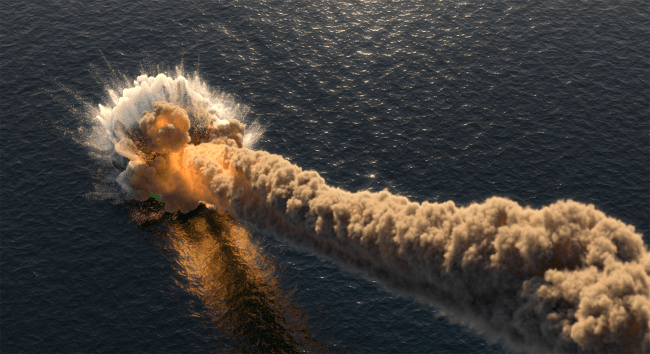
iStockphoto
The search for UFO crash debris in the Pacific Ocean has turned up alien artifacts, says Harvard astrophysicist Avi Loeb, the leader of the expedition called the Galileo Project.
The project hopes to determine if interstellar meteor CNEOS 2014-01-08, or IM1, which crashed in 2014 about 100 miles off the coast of Papua New Guinea near Australia, is actually alien in nature.
In June, Loeb and his team of explorers made what they referred to as an “anomalous” discovery.
Writing in a diary he is keeping during the expedition, Loeb explained that an unusual fragment – “a strange curled wire” – was recovered.
“The fundamental question is why was it not washed away by the ocean water as the sled was dragged by the ship, Silver Star,” he wrote. “The most plausible explanation is that the volcanic magnetic particles held it in place like a magnet holding a piece of paper in place on a magnetic pad.
“The wire is 8-millimeter long and curved twice with a rigid structure. What is it made of?
“Today, Ryan Weed and Jeff Wynn analyzed in detail this unexpected wire and concluded that its composition is anomalous compared to human-made alloys.”
One week later, the astrophysicist reported that they had discovered 50 microscopic spherules so small they can only be viewed through a microscope.
“We found a composition of mostly iron with some magnesium and titanium but no nickel,” Avi Loeb wrote in his journal. “This composition is anomalous compared to human-made alloys, known asteroids and familiar astrophysical sources.”
Speaking later to Fox News, Loeb added, “This could be the first time humans put their hands on interstellar material. This has never been done before. We never received a package at our doorstep from a cosmic neighbor.”
Now, the chairman of Harvard’s Department of Astronomy from 2011 to 2020 claims they have recovered pieces of an interstellar object, i.e. actual alien material.
“For the first time in history, scientists analyzed materials from a meter-size object that originated from outside the solar system,” he wrote in a journal entry this week.
He added that “conservative analysis revealed that five unique spherules from the high-yield (yellow) regions near IM1’s path and not anywhere else, showed a composition pattern of elements from outside the solar system, never seen before.”
Loeb also stated that the abundance pattern of beryllium, lanthanum and uranium that was discovered “does not match terrestrial alloys, fallout from nuclear explosions, magma ocean abundances of Earth or its Moon or Mars, or other natural meteorites in the solar system.”
He goes on to provide some possible scientific explanations for his findings, but did add, “A more exotic possibility is that this unfamiliar abundance pattern, with uranium being nearly a thousand time more abundant than the standard solar system value, may reflect an extraterrestrial technological origin. These interpretations will be considered critically along with additional results from spherule analysis in future work.”
Loeb and his research team’s findings are discussed further in a pre-print paper published on Harvard’s website.